More mangroves in wetland habitat to be opened at Gardens by the Bay in 2027
Sign up now: Get ST's newsletters delivered to your inbox

Mangroves are effective in capturing and storing carbon dioxide in roots and surrounding sediments.
ST PHOTO: CHONG JUN LIANG
Follow topic:
SINGAPORE - More mangrove species will be planted at a wetland habitat to be created in Gardens by the Bay, after studies have shown such habitats effectively capture carbon and help biodiversity to thrive.
Mangroves, which are usually found in the intertidal areas of coastal rivers, are effective in capturing and storing carbon dioxide in roots and surrounding sediments, helping to keep the planet-warming gas from entering the atmosphere.
These forests can capture three to five times more CO2 compared with tropical forests, depending on which species of mangroves are planted and where.
Gardens by the Bay said on Thursday it would be doubling the planting area for mangroves at the upcoming 5,148 sq m wetland habitat at Bay East Garden, following encouraging results from a pilot study conducted at its Kingfisher Wetlands, which opened in November 2021.
Bay East Garden is slated to open in 2027.
More than 200 mangroves were planted in the Kingfisher Wetlands, including some critically endangered species.
The study – conducted by environmental consultancy DHI Water and Environment – identified which mangrove species could survive in the freshwater conditions of the wetlands at Gardens by the Bay, given that their regular coastal habitats are rather distinct, Dr Danielle Su, an oceanographer with the company, told reporters on Thursday.
It was found that some species, particularly those under the Lumnitzera genus, had the highest survivability rates – despite being salt-loving species which thrive in coastal habitats.
In addition, more carbon content was collected from the sediments of these ponds within the wetlands than in other blue carbon ecosystems in Sungei Buloh, Seletar Island and Chek Jawa as the carbon sequestration abilities of these ecosystems are often affected by the natural tides, currents and frequent inundation.
Blue carbon refers to carbon captured by marine and coastal ecosystems, which could include salt marshes and seagrass meadows.
At the Kingfisher Wetlands, the carbon storage ability of the mangroves also increased over time, as the plants grew over the one-year monitoring period.
The study took place from January to December 2022, and it was supported by the National University of Singapore (NUS) Centre for Nature-based Climate Solutions, Temasek and SG Eco Fund.
The findings were released at a public lecture at Gardens by the Bay on Thursday, attended by Second Minister for National Development Indranee Rajah.
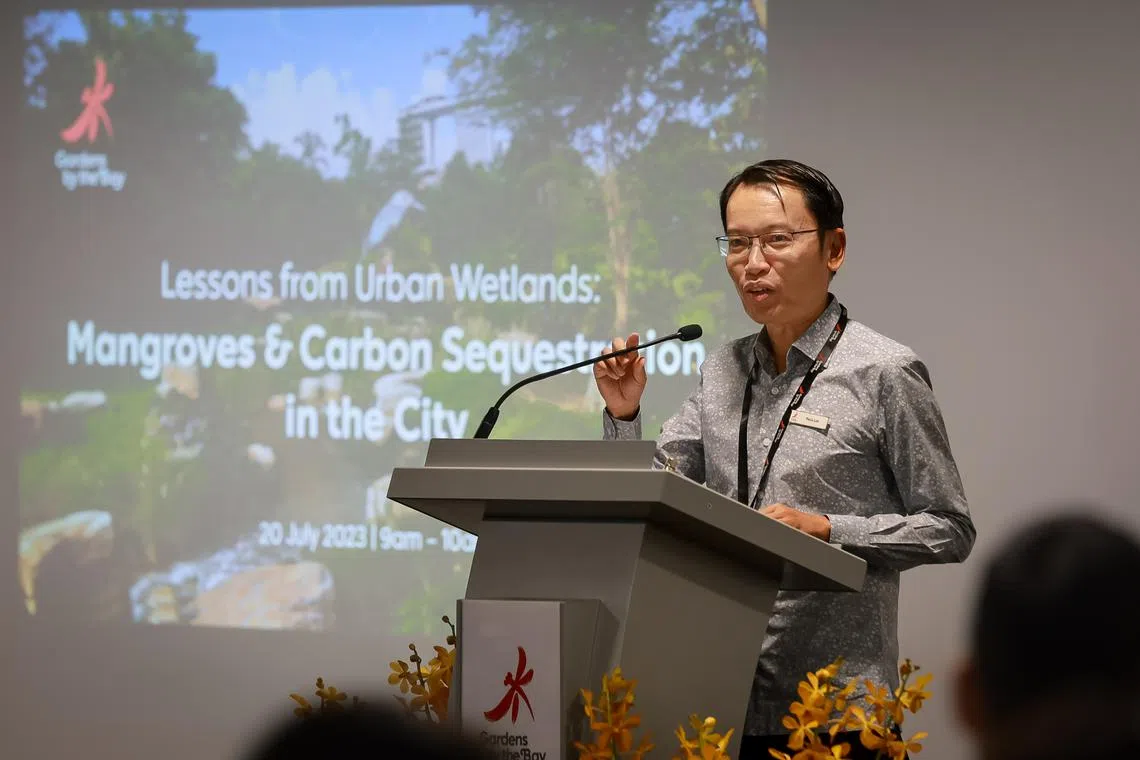
Gardens by the Bay chief executive Felix Loh at Gardens by the Bay on July 20, 2023.
ST PHOTO: GAVIN FOO
The lecture was given by Ms Umairah Karim, marine scientist at DHI Water and Environment, and Dr Naima Iram, research fellow at the NUS Centre for Nature-based Climate Solutions, who spoke about mangrove restoration in Pulau Ubin.
The ecologists at DHI found that a total of 65 species of fauna – including locally endangered and vulnerable species – were also documented at the Kingfisher Wetlands site, indicating the habitat effectively fosters biodiversity.
For instance, the mangrove foliage is often denser than that of a lot of tree species, making it a good shelter for animals, said Dr Su.
More than 30 species of bird, including migratory ones, were documented, along with nine species of reptiles and more than five species of fish.
Asked about the potential for the study to be turned into a carbon credit project – where carbon credits are generated for each additional tonne of CO2 that the mangroves can sequester from the atmosphere – Dr Su said that closer monitoring of these habitats for a longer period of time would be crucial.
This would be to ensure that these mangrove ecosystems continue to act as they would in their natural habitat and can store CO2 permanently.
Dr Su added that the project was aimed at ensuring the survivability of these mangroves, and the next phase would look at optimising the removal of CO2 from the atmosphere, which could then lead to possible accreditation for carbon credits.
Noting the rarity of urban, man-made wetlands in Singapore, Gardens by the Bay’s chief executive Felix Loh said he was glad that the Kingfisher Wetlands could serve as a platform for ecologists to look at its carbon sequestration potential.
“Such wetlands bring biodiversity closer to city-dwellers and are also a platform to educate people on the potential of man-made wetlands as a way for cities to contribute to the fight against climate change.”
Gardens by the Bay said there are plans to involve citizens in planting the mangroves at the new wetland habitat at Bay East Garden.
Interesting fauna at the Kingfisher Wetlands
Oriental magpie-robin
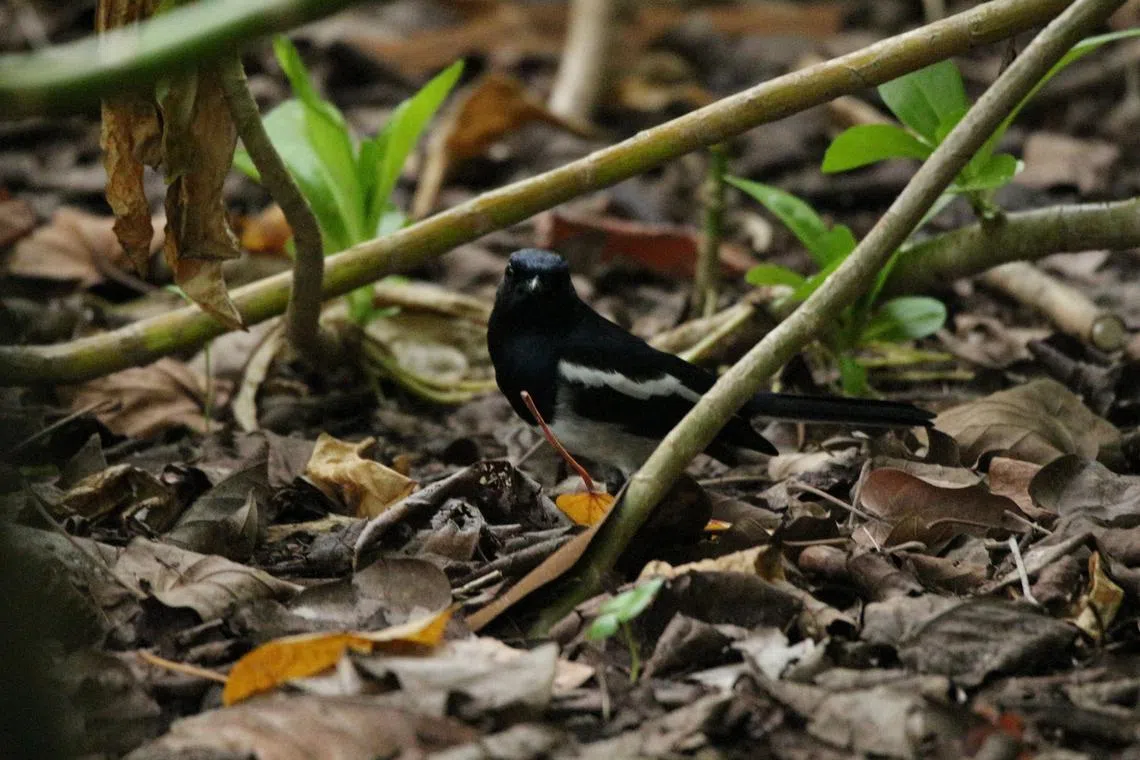
The oriental magpie-robin can currently be found in a number of parks and nature reserves.
PHOTO: DHI
These birds, commonly found in gardens, parks and mangroves, are well known for their singing ability. The birds had experienced a population crash in the 1970s due to poaching, habitat destruction and competition from mynahs. The birds can currently be found in a number of parks and nature reserves, and its current population stands at around 50 to 150.
Purple heron
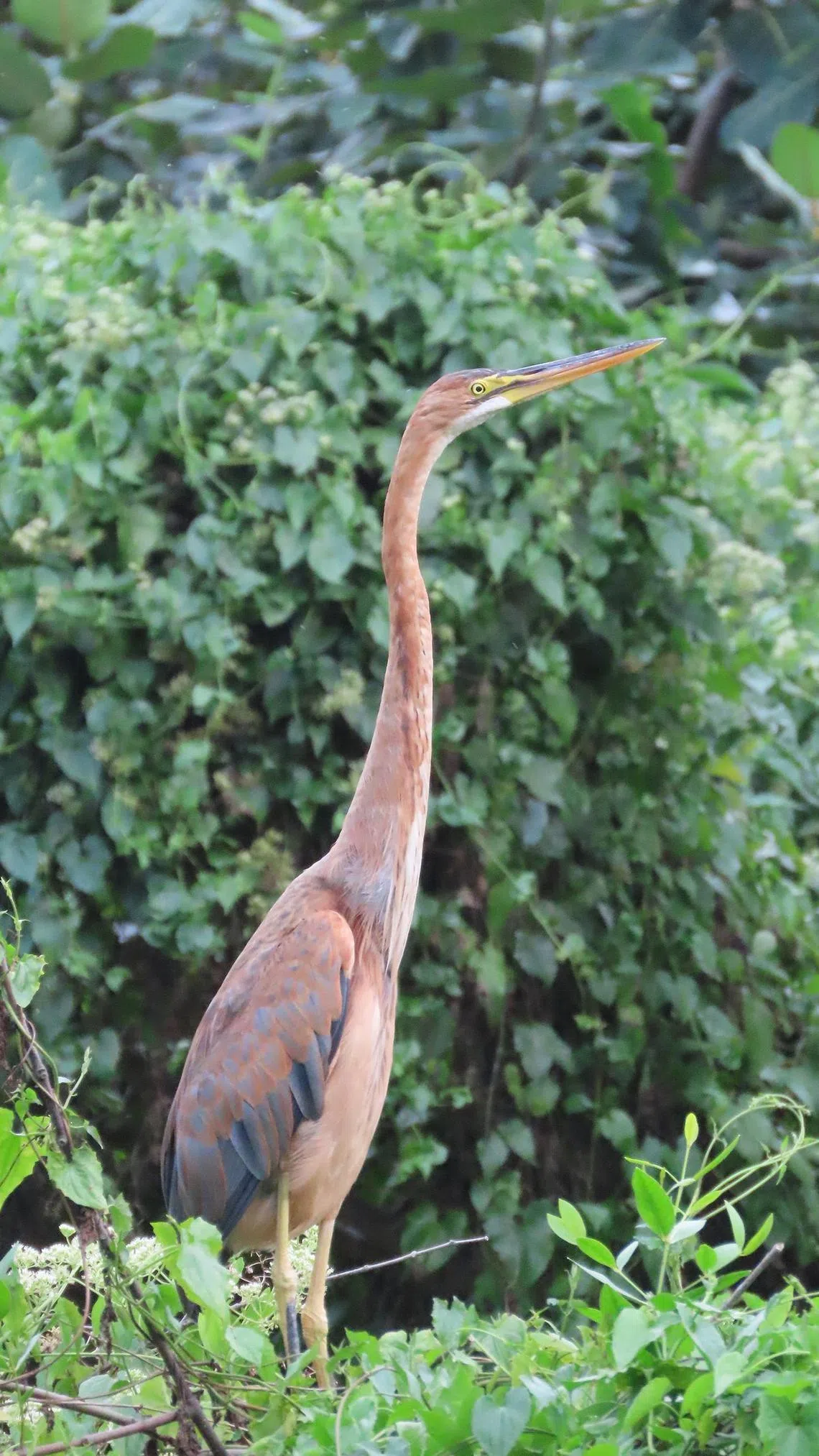
The purple heron feeds on a wide variety of fauna including fish, frogs and other small animals.
PHOTO: DHI
These birds can be as tall as 78cm to 90cm, and can be found hidden in well-vegetated freshwater wetlands, such as the Kranji Marshes, Bishan-Ang Mo Kio Park and Jurong Lake Gardens. They feed on a wide variety of fauna including fish, frogs and other small animals, and often stand motionless in shallow water to impale their prey with their sharp beaks.
Yellow bittern
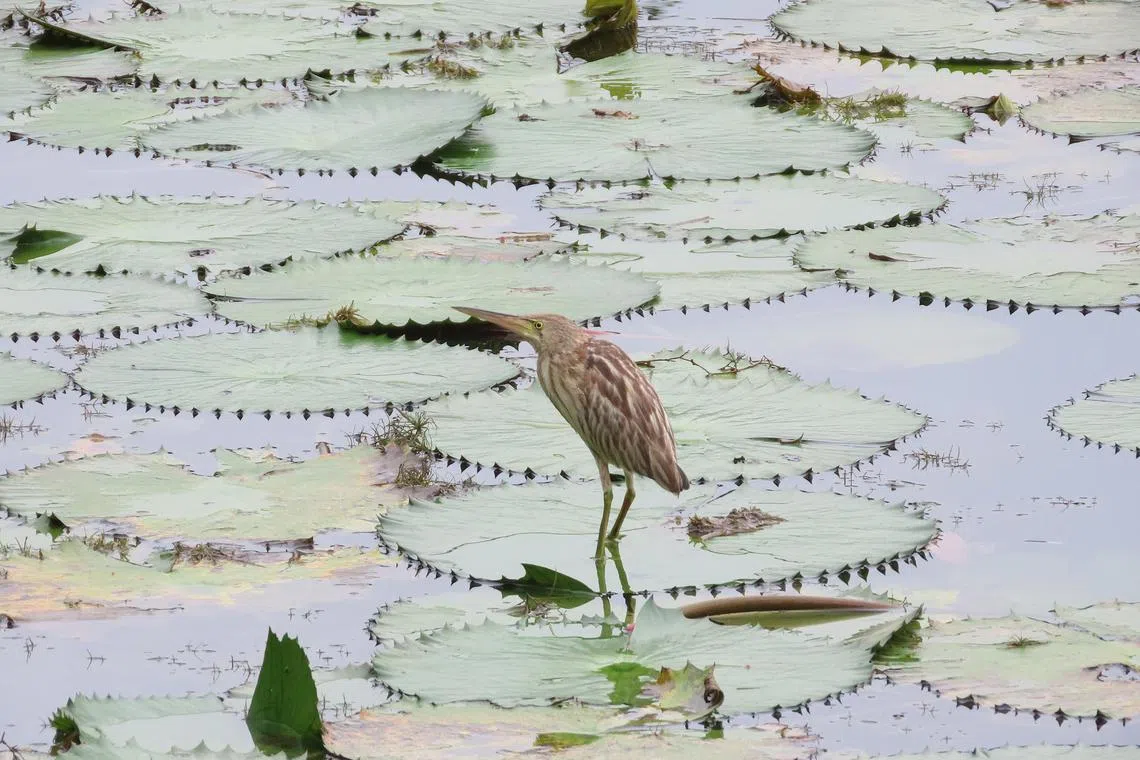
The yellow bittern can be found in habitats like marshes, grasslands, ponds and reservoirs.
PHOTO: DHI
These are migratory birds that spend the winter breeding in South-east Asia, South China and New Guinea, and commonly pass through Singapore between November and May. They can be found in habitats such as marshes, grasslands, ponds and reservoirs, and have often been sighted at the Sungei Buloh Wetland Reserve.
Lumnitzera racemosa mangrove species
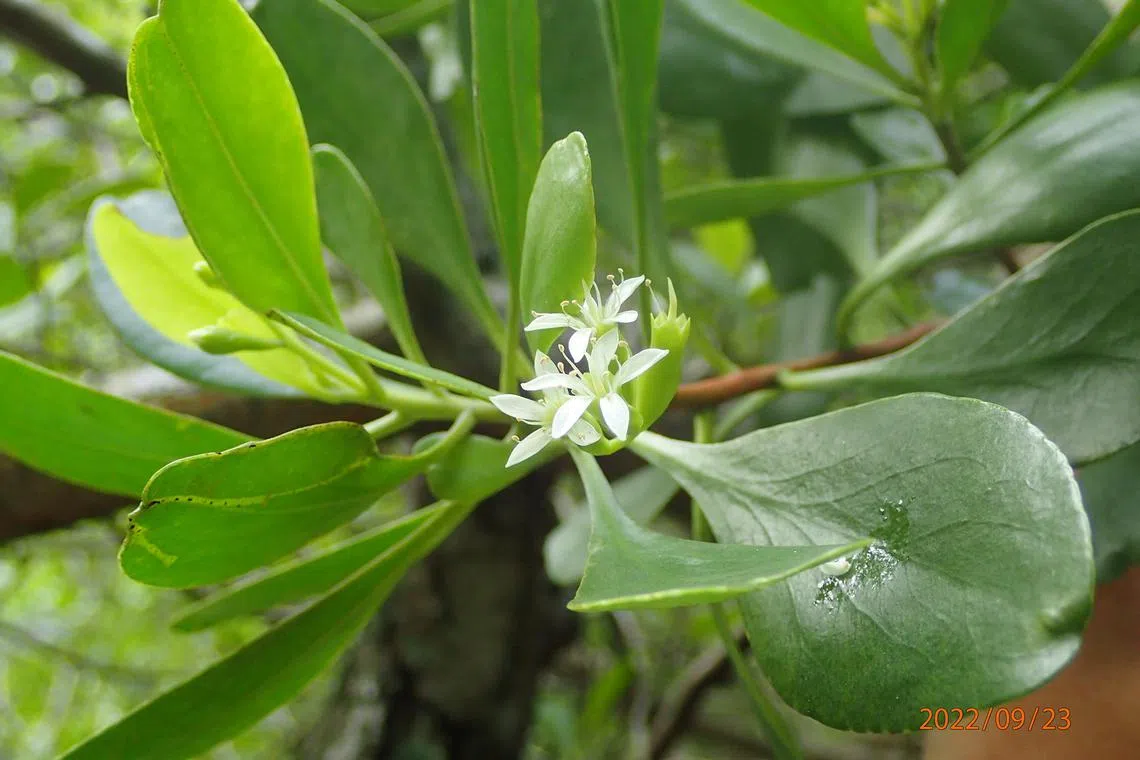
Lumnitzera racemosa is a flowering plant that can grow well in freshwater.
PHOTO: DHI
This is an endangered species that typically grows as a shrub or a tree of up to 8m tall. It is a flowering plant with white flowers and can grow well in freshwater, making the tree suitable for planting on the banks of water bodies and in damp grounds in public parks.


